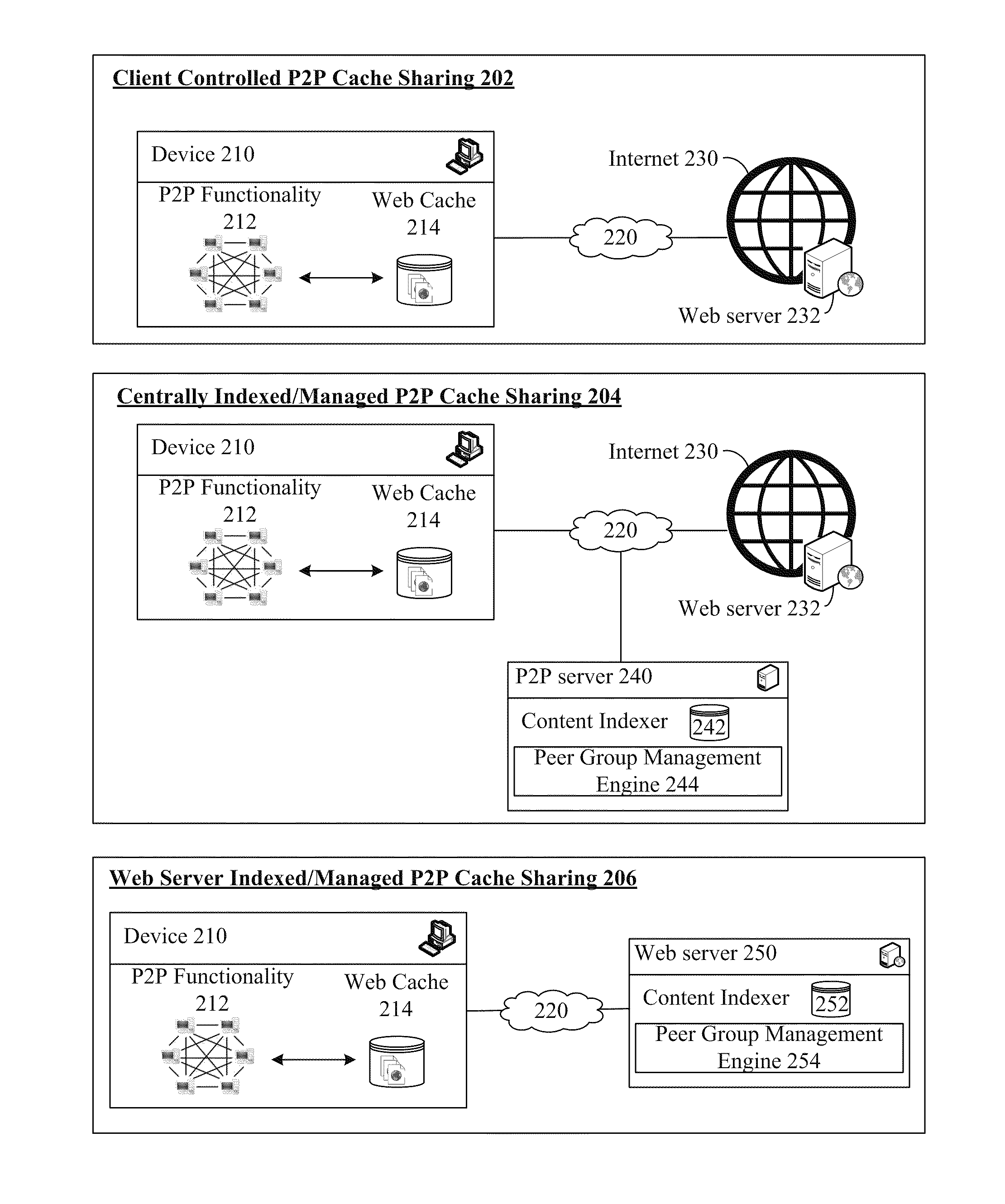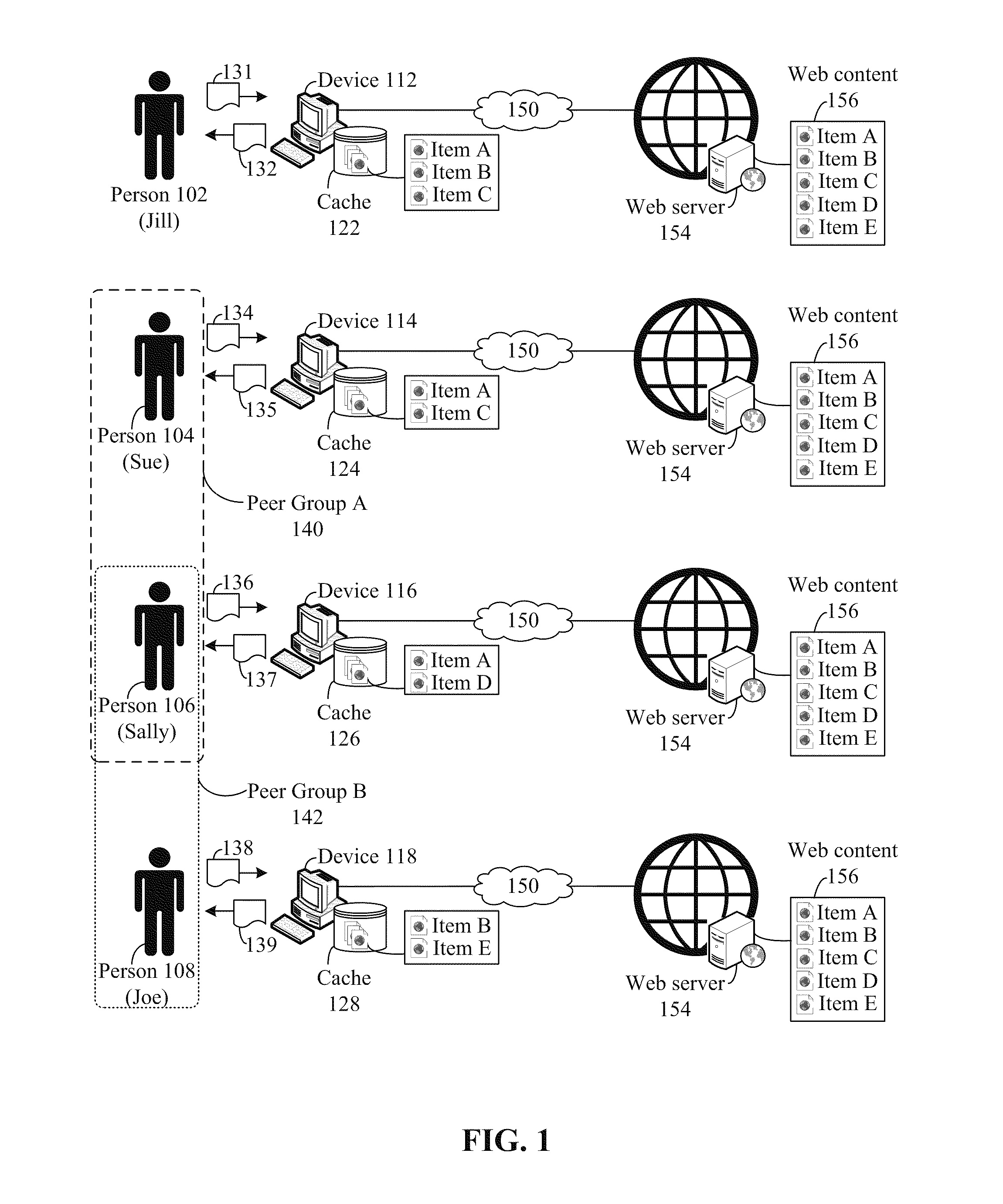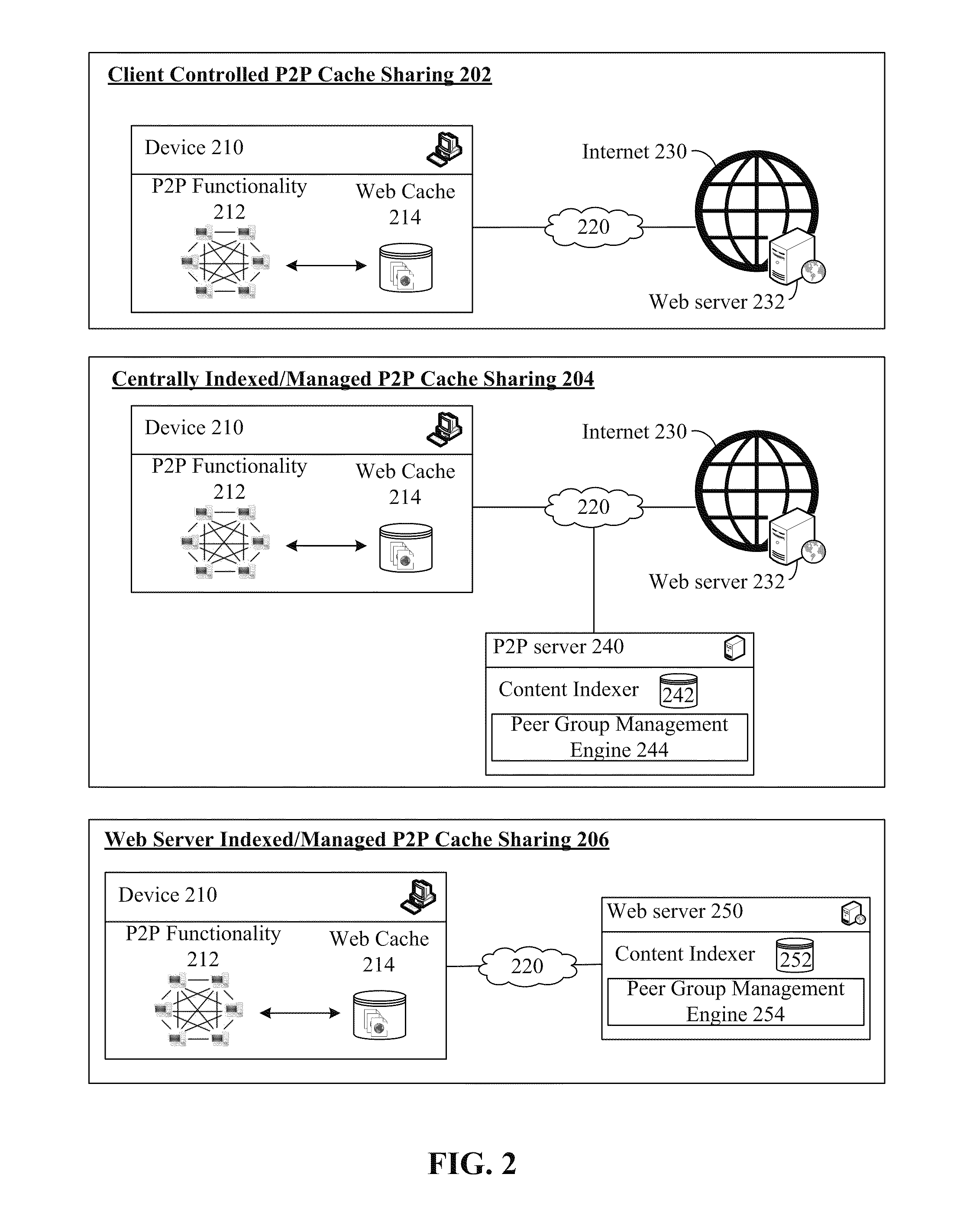Redirecting web content
a web content and redirection technology, applied in the field of web downloads, can solve the problems of internet flash crowds, high cost for web service providers to maintain hardware, software, bandwidth capacity,
- Summary
- Abstract
- Description
- Claims
- Application Information
AI Technical Summary
Benefits of technology
Problems solved by technology
Method used
Image
Examples
embodiment 204
[0046]In embodiment 204, a centralized P2P server 240 can include a content indexer 242 and / or a peer group management engine 244. Thus, the P2P server 240 can function as a centralized server in a centralized P2P system (or as a supernode in a hybrid P2P system) or can functions a central server in a structured P2P system.
[0047]The P2P server 240 can be implemented within middleware in one embodiment. In another embodiment, the P2P server can be implemented at an edge of a network 220, which is distinct from a public IP network, such as internet 230. For example, network 220 can be an intranet (a virtual private network or local area network) used by a company, where P2P cache sharing is permitted among company owned / operated devices 210. Since company-specific Web browsing activities can be expected to have significant commonalities, gains can be achieved that are greater than those expected from an unrelated population of users. Further, sharing of Web caches can occur within def...
embodiment 206
[0050]In embodiment 206, the Web server 250 itself can be a peer of the peer-to-peer system in which Web cache content is shared. For example, the Web server 250 can function as a centralized server (or server in a structured P2P network). Thus, Web server 650 can include a content indexer 252 and / or a peer group management engine 254. In such an arrangement, the Web server 250 can selectively redirect Web requests, such as redirecting requests to P2P caches when the Web server 250 is in an overload state. Embodiments where the Web server 250 is strongly involved in the P2P network are elaborated upon in FIGS. 5 and 6. It should be emphasized that these embodiments (from FIG. 5 and / or 6) are not intended to limit the scope of the disclosure. Specifics expressed in the embodiments of FIG. 5 and FIG. 6 are, however, applicable in other ones of the embodiments, as will be evident to one of ordinary skill.
[0051]FIG. 3 is a diagram 300 of a system in which Web browser caches are shared u...
PUM
 Login to View More
Login to View More Abstract
Description
Claims
Application Information
 Login to View More
Login to View More - R&D
- Intellectual Property
- Life Sciences
- Materials
- Tech Scout
- Unparalleled Data Quality
- Higher Quality Content
- 60% Fewer Hallucinations
Browse by: Latest US Patents, China's latest patents, Technical Efficacy Thesaurus, Application Domain, Technology Topic, Popular Technical Reports.
© 2025 PatSnap. All rights reserved.Legal|Privacy policy|Modern Slavery Act Transparency Statement|Sitemap|About US| Contact US: help@patsnap.com



